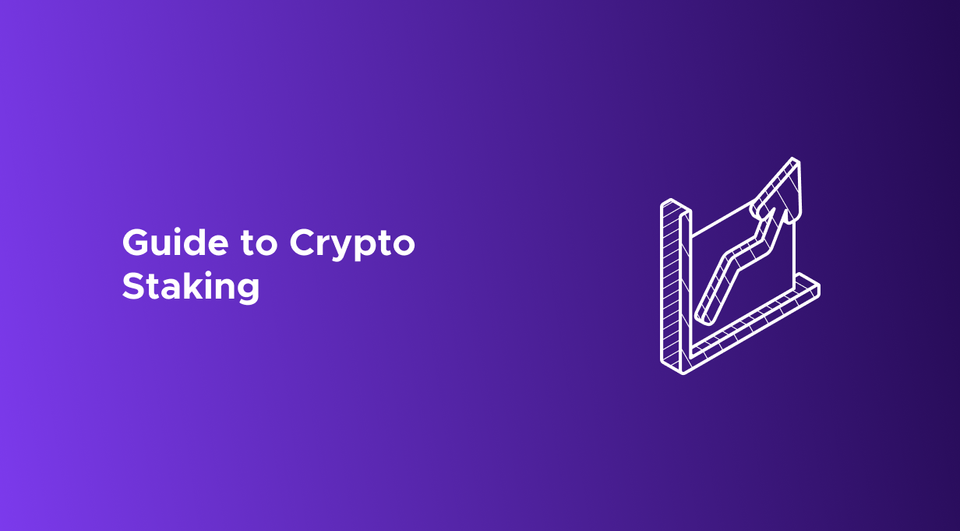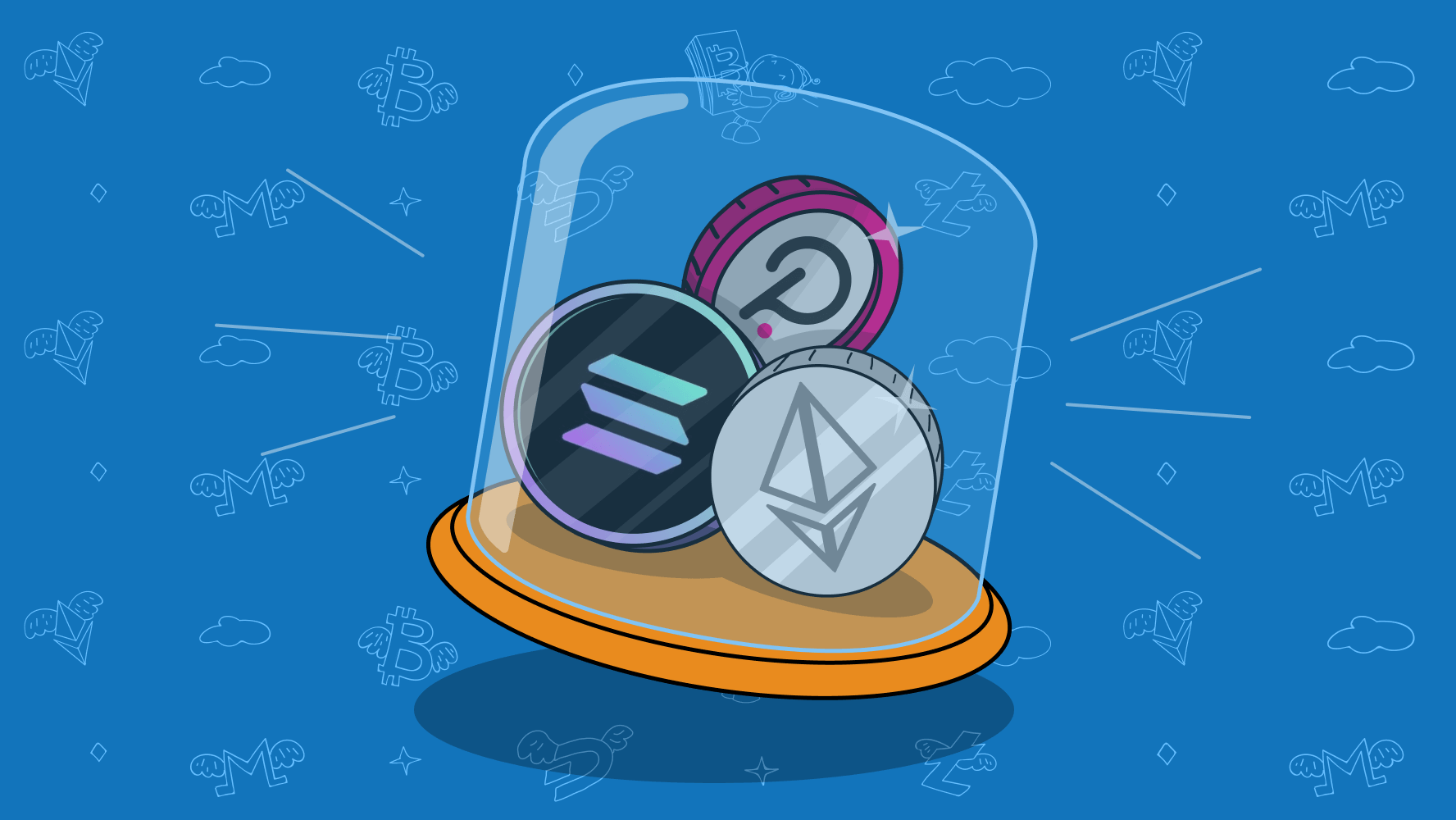Crypto Guide: Crypto Staking Basics-Risks and Benefits

Did you know that there are creative ways to earn crypto other than buying and selling? Yes, it's possible through the crypto staking. Staking or holding cryptocurrencies let you earn a passive income. Interested to learn more about staking, and how it works as a source of passive income?
In crypto, a quick way to earn a profit is to buy an asset at a low price and sell it a high price. However, there's another way to make money, and it doesn't require you tracking the market price of the underlying asset and getting upset by extreme market volatility. We call this as "crypto staking", a process where a holder puts their coins to work and earn passive income without selling them. In a way, we can compare staking to a high-yield savings account where you earn interest when you deposit your money in a bank.
In theory, crypto staking isn't too different from how a high-yield savings account works. However, the similarities between these two ends here; there are a few more things you should know about crypto staking.
Revisiting crypto staking
Staking means locking your crypto assets for a period of time to support the blockchain's operations, such as vouching for the accuracy of transactions on an underlying blockchain network. In return for staking your assets, you earn a reward.
While the concept behind staking may seem complicated, the actual practice is actually much easier and convenient even for beginners. For example, many crypto exchanges today offer a simplified crypto staking program where they handle the technical details and get a share of the proceeds. In short, you'll just opt-in to join its staking program, set an amount of an underlying asset you want to lock and stake, and complete the lock-in period to earn rewards.
As covered by our blog, there are different consensus mechanisms that are used by blockchains. Not all of these mechanisms support crypto staking. You can only take part in crypto staking in blockchains with a proof-of-stake mechanism. So, should you jump into the trend and stake your crypto assets? Before you decide, make sure to check the risk and benefits associated with crypto staking.
Benefits of crypto staking

- Earn passive income. The primary benefit of crypto staking is that it allows you to earn a passive income. Traditionally, you get income from crypto through buying and selling. But in staking, you'll get rewards by simply holding your asset for a period of time.
- Convenient, and it's beginner friendly. While the technology behind crypto and staking requires advanced knowledge and skills, joining the actual staking process to earn rewards has been made convenient. In many crypto exchanges today, you'll just need to set a wallet, load it with an asset, and click the 'staking' button on a validator or staking pools.
- No minimum amount required. Yes, there's no minimum amount required for you to stake on leading exchanges. Also, the fees are instantly deducted from the staking rewards you accrue.
- Support blockchain projects you like. By staking your assets, you support the blockchain's efficiency and security. Here, you pledge your tokens to a network to be selected as a block validator. As a reward for correctly adding blocks, node operators get staking rewards.
In some crypto exchanges, staking comes in at least two forms: the basic and professional. In the basic staking program, there's no minimum amount required to participate, and rewards are proportionally shared by all participants. However, you can't track the position on-chain and all rewards are just credited to a single address.
The other program requires a minimum staking amount, like 32 ETH. By signing up for this option, you on-chain information, plus rewards are credited in segregated addresses.
Risks of staking your crypto
There are a few drawbacks in staking your crypto and it's crucial that you are aware of these. In staking, you'll have to commit your assets for weeks or months depending on the program.
Here lies the first risk in staking: during this time, you can't withdraw or trade your tokens. So, if your asset suddenly hit an all-time high, you won't be able to withdraw and sell it. Or worse, if your token has become bearish during the staking period, there's no way for you to exit your position. Yes, staking programs boasts an Annual Percentage Rate or APR, but these only range from 2 to 6%, which is "small" compared to potential downswings in the market.
If you want to stake but still enjoy "some form of liquidity", then you can check out the offerings from some blockchain like Ethereum with their "liquid staking" products. These products offer a tokenized version of the assets, making these "liquid". However, you'll be selling these on the secondary market, and you'll need to search for a willing lender or buyer. And there's no guarantee in these transactions.
Also, some networks use "slashing" as a way to penalize bad actors and validators. Operators who add invalid functions, like adding incorrect blocks, could lose a portion of their pledged assets. So, if you stake with a bad or dishonest validator, you can lose a part of your investment.
Experts say that the slashing mechanism aims to motivate holders to stake their tokens to validators who they think are reputable. As such, it's never good to go all-in with one validator; it's best to spread out your tokens with several reputable validators.
Should you stake your tokens?
Staking is now a popular option for holders who want to generate rewards on their assets. It's a recommended option for those who see cryptocurrencies as a long-term investment and unbothered by the short-term price volatility. If you're uncomfortable with the market volatility, or you have plans to buy and sell before the staking period ends, then staking is not for you.
Before you download an app or join a staking program, it's best to review the T&Cs of the program, including the staking period, the APR, or if the exchange implements a "slashing" policy. Most crypto exchanges offer an APR that range from 2 to 10%. Be wary of staking programs that offer unrealistic annual yields.
There are plenty of exchanges that offer a staking program, so learn to compare and assess programs by looking at their UI, network rewards, and availability of reporting. Also, only work with a company with a positive industry reputation with an established security program. Finally, remember that you're still dealing with cryptocurrency that's highly volatile and unregulated: only stake an amount you can afford to lose.



